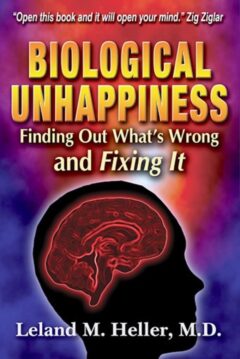QUESTION:
Dr. Heller,
I found your article for Primary Care Physicians and intend to pass it on to the practitioners who are treating my Borderline Personality Disorder significant others. However, I noted the article is dated Nov 2, 1991. A great deal has happened in 7 years. I wonder if there are updated thoughts, research and information out on managing BPD…..
![]()
ANSWER:
There’s not a lot of scientific literature on the subject, particularly biologically based, which has been frustrating. A few medical studies have shown that SSRI’s, particularly Prozac, do indeed work for the BPD, although except for my small study on Prozac vs. Zoloft, the exact target symptoms haven’t been addressed.
There has been a study showing Depakote reduced hostility in BPD victims, however a study in 1991 showed that Tegretol was better and safer than Depakote for complex partial seizures, which many of us believe are part of the BPD.
Since I believe the BPD is correlated with glial cell malfunction, the discovery in the last two years that Prozac improves glial cell function is very exciting, and may partially explain why Prozac is so superior for BPD symptoms.
The “comorbidity” of panic disorder with the BPD and the ability of Paxil to work for the panic disorder has been a great find. Paxil, to me, works best for borderlines also experiencing panic – and the combination untreated has a 25% suicide rate. Many of my combined panic and BPD patients take both Paxil for the panic and Prozac for rejection sensitivity and the SSRI BPD target symptoms – moodiness, chronic anger, emptiness and boredom.
The most frustrating change has been the loss of brand name Haldol. Haloperidol is now only available generically, and it doesn’t work as well. It does work as well when the dose is high enough, but that makes it expensive and less predictable. In general where the brand name used to work at 0.5mg, the generic usually required 1-2mg to get the same effect.
To me the most exciting changes in the past 8 years has been the recognition of ADD as strongly associated with the BPD and the release of Risperdal. I believe as many as half of BPD victims had and continue to have ADD with their BPD. Risperdal is a powerful antipsychotic that works on more than the dopamine system, and can stop virtually all borderline dysphoria, suicidality and psychosis, although usually Prozac and Tegretol have to be in the system at the same time to get an excellent result. High doses are generally needed to accomplish this, and side effects are a problem at these high doses. Sedation (sleepiness) can be impressive, and can render some individuals nonfunctional for a few days. When in a crisis, however, grogginess is not as important as preventing a disaster. Zyprexa is a fair alternative.
In my work I’ve discovered the incredible importance of diagnosing and treating the other disorders commonly associated with the BPD – particularly panic, GAD, OCPD, OCD, ADD, and dysthymia. Very exciting for me as well is my observation that in the last 2 years every patient who felt hyper on Prozac also had the cognitive GAD – generalized anxiety disorder. The GAD appears to be due to an abnormally high serotonin at serotonin receptor site #2, which is aggravated by the SSRI class, particularly Prozac. Buspar works effectively for almost everyone who needs it to bring this down and make it possible for higher doses of Prozac to be used when necessary, and/or to add psychostimulants like Ritalin for ADD. Everything wrong has to be effectively treated for a borderline to successfully recover.
Permission by Leland M. Heller, M.D.
